
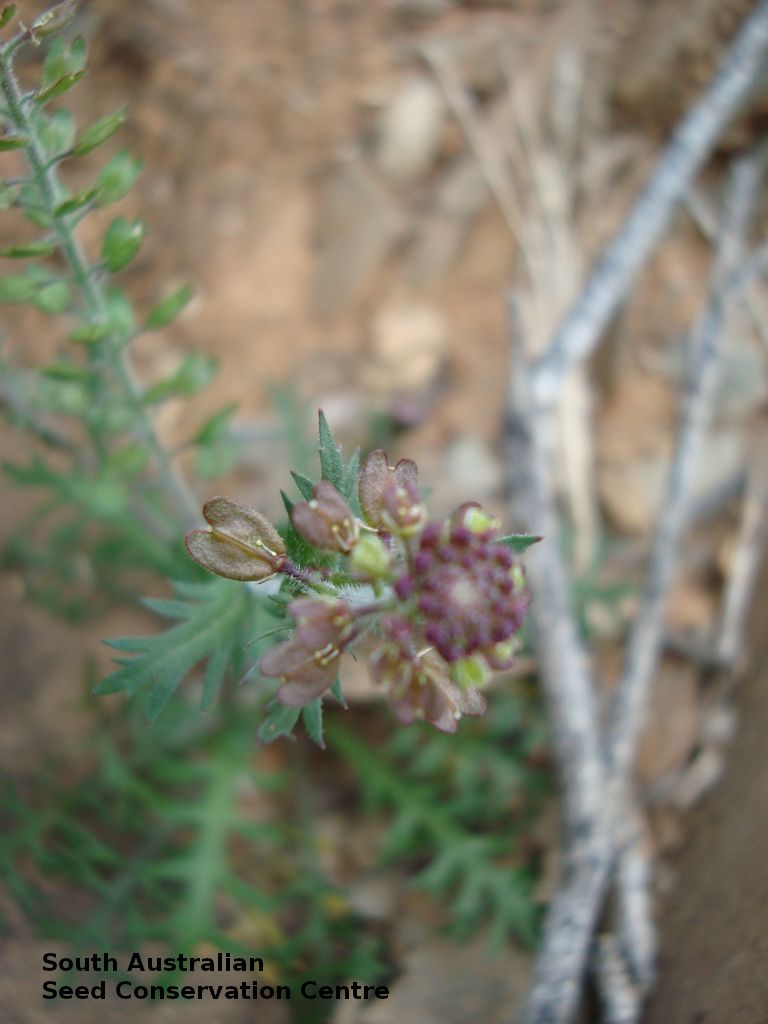
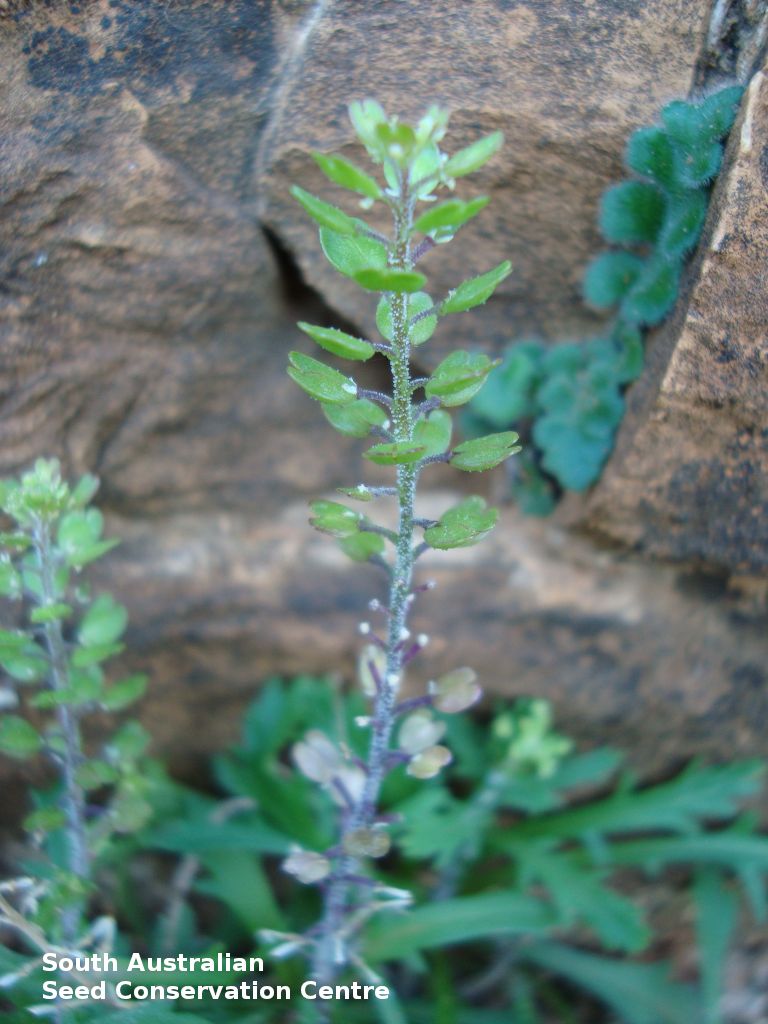
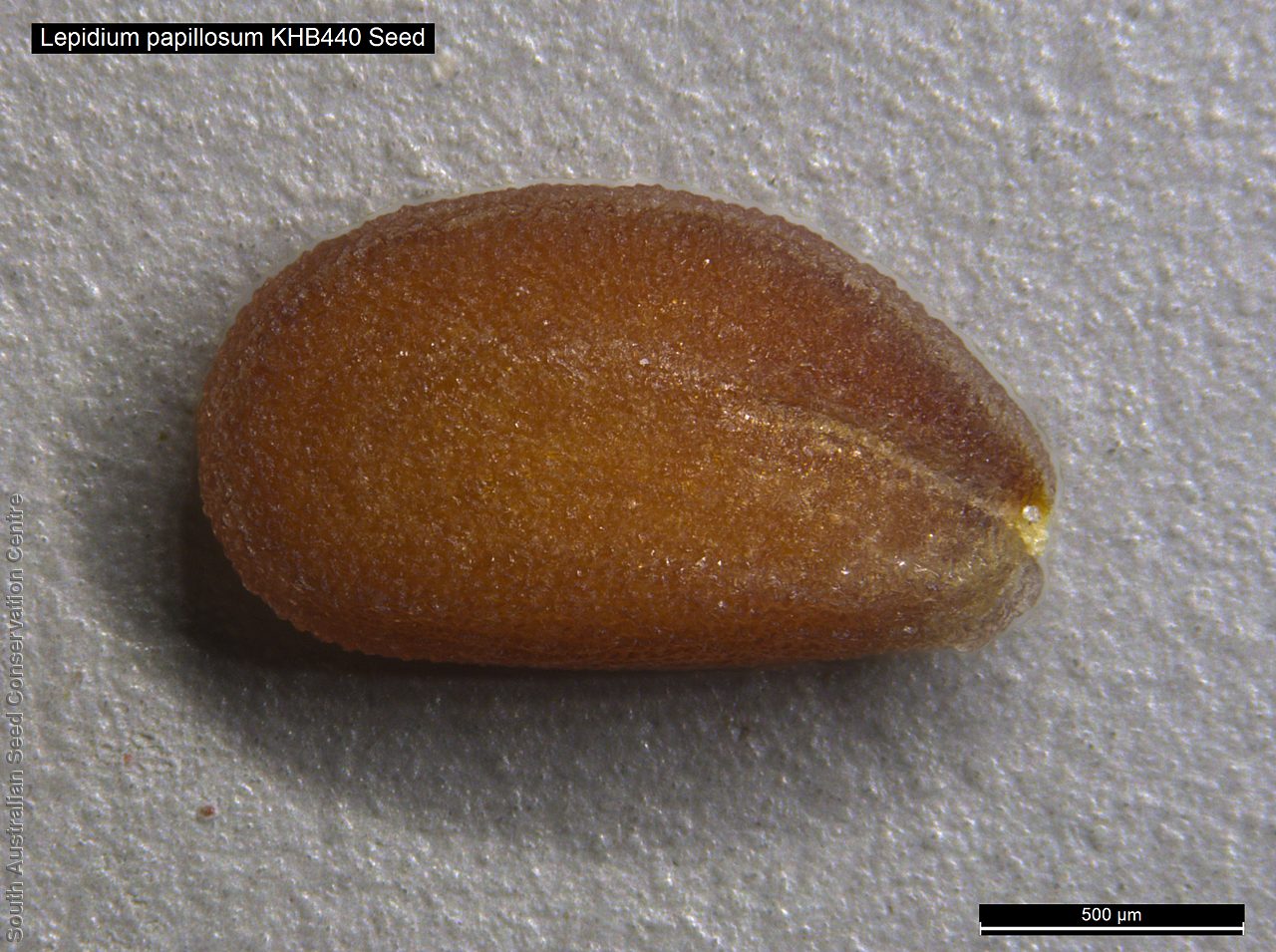
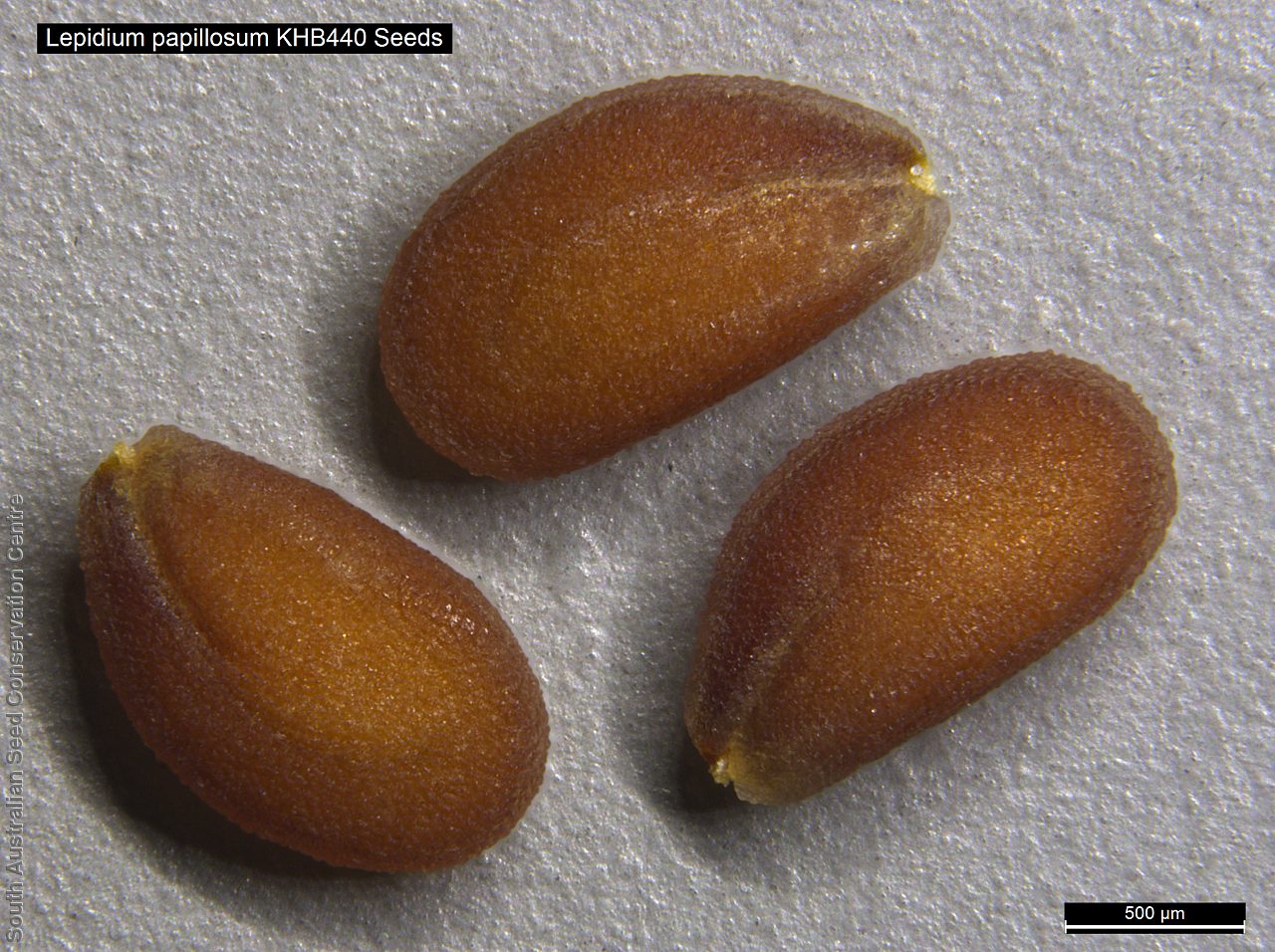
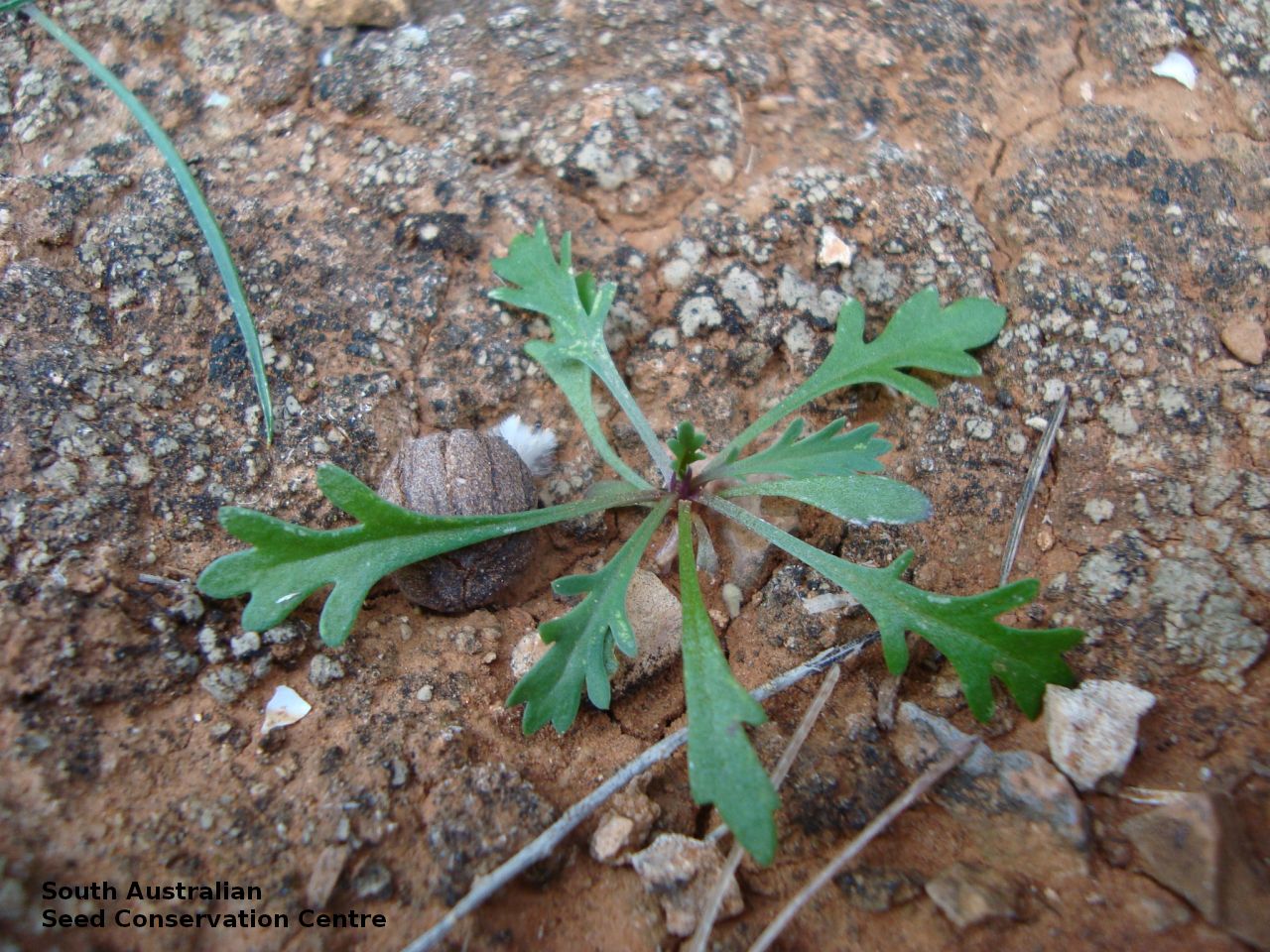

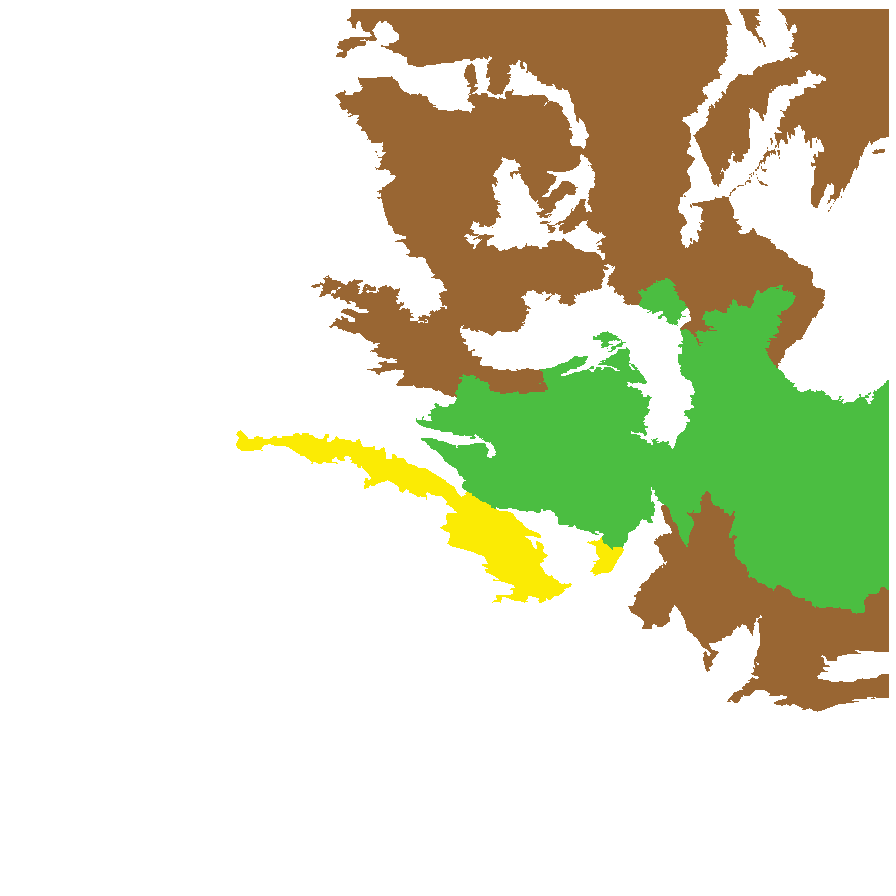
Botanical art
Etymology
Lepidium from the Greek 'lepis' meaning a scale; referring to the appearance of the fruits. Papillosum means covered with nipples or minute lobes; referring to the bladder-like hairs on the stems and fruits.
Distribution and status
Found mainly in the east central part of South Australia, growing on heavy soils near lakes, rivers and streams in semi-arid areas. Also found in Western Australia, Queensland, New South Wales and Victoria. Native. Common in South Australia. Uncommon in Western Australia, Queensland and Victoria. Common in New South Wales.
Herbarium regions: Lake Eyre, Gairdner-Torrens, Flinders Ranges, Eastern, Eyre Peninsula, Northern Lofty, Murray
NRM regions: Alinytjara Wilurara, Eyre Peninsula, South Australian Arid Lands
AVH map: SA distribution map (external link)
Plant description
Erect ephemeral or annual herb to 30 cm high, mature plants often purplish, stems covered with white, inflated, bladder-like hairs. Basal leaves linear-cuneate, to 10 cm long, toothed to bipinnate lobed, stem leaves becoming smaller, finally sessile, broadly toothed. Inflorescence an elongating spike with tiny white flowers, petals absent. Flowering between June and September. Fruits are red-brown ellipsoid pod to 6 mm long and 5 mm wide, with scattered needle-like hairs, winged in the upper half forming an open notch about one-fifth of the length of the fruit. Seeds are orange-brown reinform seed to 1.5 mm long and 0.9 mm wide, with fine tuberculated surface. Seed embryo type is bent.
Seed collection and propagation
Collect seeds between August and November. Collect maturing pods those turning pale brown with hard seeds inside. Be gentle with the pods as they split open easily. Place the pods in a tray and cover with paper to prevent seeds from popping out and leave to dry for a week. Then rub the dried pods gently by hand to dislodge the seeds. Use a sieve to separate the unwanted material. Store the seeds with a desiccant such as dried silica beads or dry rice, in an air tight container in a cool and dry place.
| Location | No. of seeds (weight grams) | Number of plants | Date collected | Collection number Collection location | Date stored | % Viability | Storage temperature |
|---|---|---|---|---|---|---|---|
| MSB | 18,000 (5.12 g) | 100 | 25-Sep-2008 | DJD1138 Lake Eyre | 95% |
Number of plants: This is the number of plants from which the seeds were collected.
Collection location: The Herbarium of South Australia's region name.
% Viability: Percentage of filled healthy seeds determined by a cut test or x-ray.